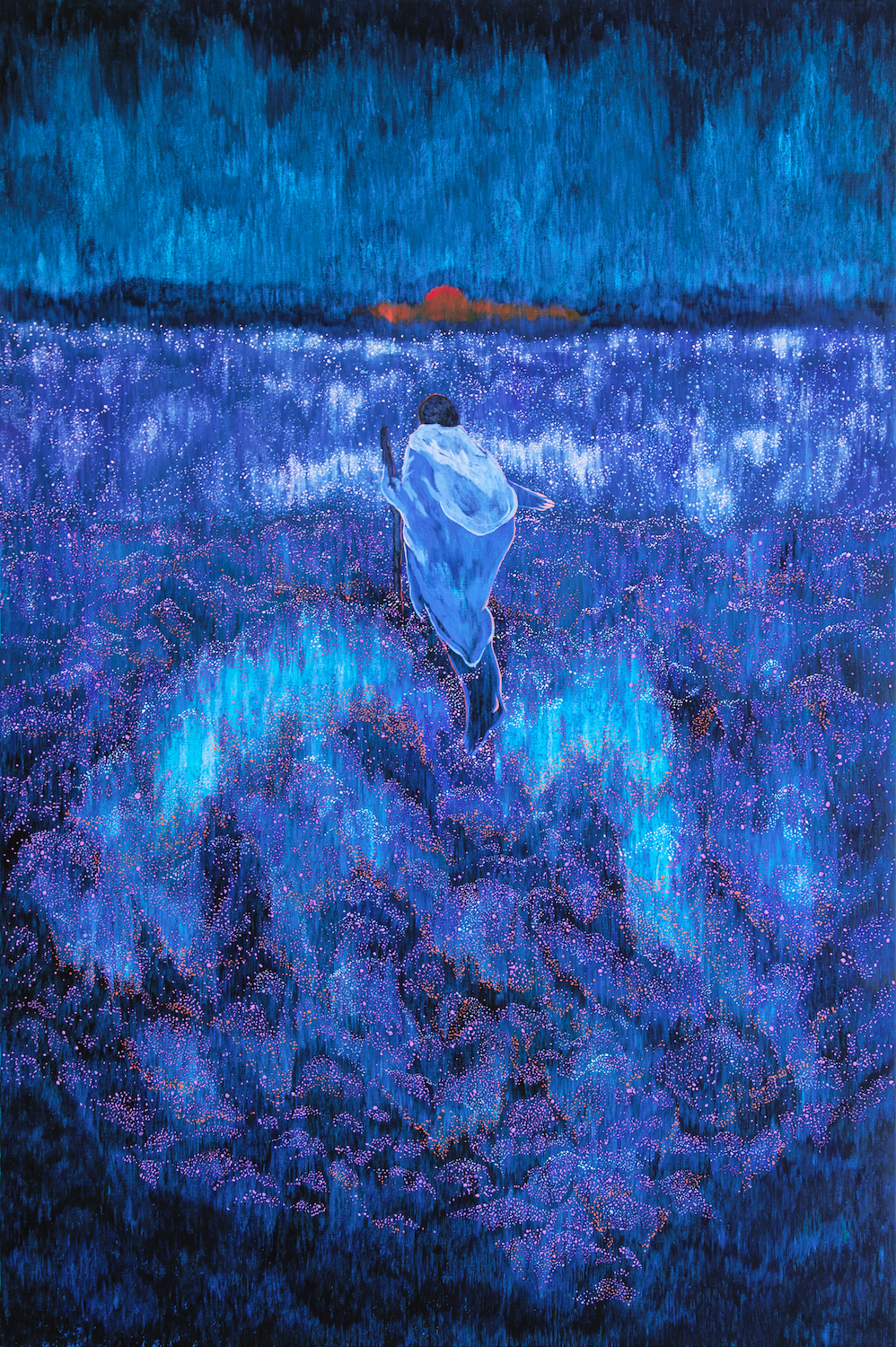DUMONTEIL Shanghai is pleased to present Demain dès l'aube (Tomorrow at Dawn), the solo exhibition of French artist Tess Dumon. This is the artist's fifth solo exhibition at the gallery, featuring more than twenty most recent sculptures, paintings and drawings, showcasing how her artistic language has evolved in the past few years. Borrowing from Victor Hugo's eponymous poem as departure, Dumon embarks on a journey of exploration through her personal mythological dreamscape, capturing the ineffable thoughts and emotions during the equally floating moment between night and day.
In Hugo’s Demain, dès l'aube, a masterpiece of French literature, it is not until the last two verses that we discover he will visit a woman’s grave, a woman he loved with his heart and soul. However, even before the ending, we have already perceived the author’s longing with deep sorrow. There seems to be a link between these lines and our perceptions. What we feel is clearly beyond our own experience. This inexplicable link is also the key to entering Tess Dumon’s creative universe.
Walking around these works, one may notice some protagonists (the shepherd, the rider, and a mysterious boy wearing the same simple outfit) and symbols (the sun, the shell, the peregrine) recur in both two-dimensional and three-dimensional works like a duet that complement one another. This dialogue between artworks in different mediums is a significant development in recent years as the artist invested her time and energy considerably in painting. Today, Dumon's sculpture and painting respond in form and depth.
In the captivating gouache paintings, although we do not know what is the story behind each work, we are attracted, perhaps by the mesmerizing dancing aurora that lights up the field in Demain, dès l'aube, or by the palpable warmth of the swirling snow that coated the bonding moment between the boy and the horse in Snow Coat and Moon Horse. And we seem to know how vulnerable the man must feel without seeing his face in Shepherd’s Coat. On second thought, perhaps it was us who were caught in a susceptible moment under the artist’s uncanny ability to transform emotions with images.
And this ability applies equally, if not more, in her fascinating monumental sculptures. When circling each work to get a whole look, it feels almost surreal as the lighting on the smooth contour made of wire mesh shifts with our footsteps. Unconsciously, we fulfilled the artist's idea of turning the viewing process into a performance. Upon closer scrutiny, one may find it hard to believe that all these large-scale works were hand sculpted with simple tools by one person, and more surprisingly, that we are caught by a complexity of emotions that do not seemingly belong to this cold, coarse, hollow material.
No doubt, what is depicted here has its roots in myths and legends, some more symbolic than others. Dumon turned herself towards these stories at a very young age for the same reason people have been telling them for centuries — to cope with the unexpected, the unknown that we have to face in our lives. Every civilization has its own myths and legends. This creativity, both unique and universal, is in a way similar to art. Today, this mythical touch is not only a source of inspiration or a way of answering questions but also part of the artist’s proper methodology.
Creating her own myths also allows the artist to freely embrace connotations, imagery and symbols that extend beyond the mundane world. In this exhibition, the notion of “journey” and “dawn” has been broadly explored through imageries and symbols interrelated like a series of chemical reactions. For example, “The Peregrine”, a long-distance migrant falcon, has been integrated into the representation of travelling, the longing for destination and freedom. The word “peregrine” means wanderer, and it is the origin of the word “pilgrim”, which opens new paths to those sacred journeys in the Good Shepherd, the Birth of the Pilgrim, as well as the quest for hope, guidance and protection in general.
Another essential component that ties these insights together is the protagonist's garment. This newly explored element has become another development that takes her work to new possibilities. The cloak shares a similar connotation as the shell — one that envelopes and protects, while comparing its drapes lifting by the wind to the spreading wings, thus taking us back to the peregrine. There are more associated networks like this throughout the exhibition. We can only marvel at how these symbols and ideas are morphologically connected, both linguistically and biologically speaking.
This journey, both physical and spiritual, is for the artist and the viewers as we gradually emerge from the haze of the COVID-19 pandemic while facing a volatile global situation. It reminds us of the inextricable connection between our perceptions and emotions. And sometimes, the best way to cope with difficulty is to set it free in our imagination.
